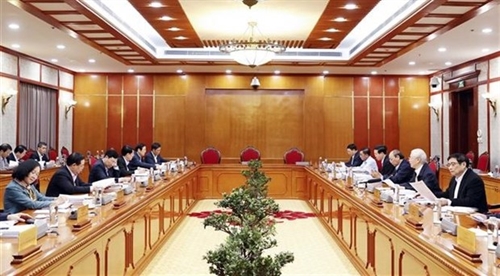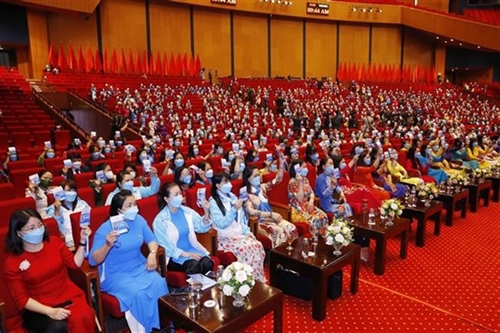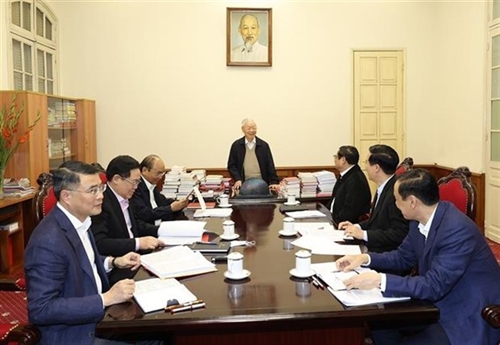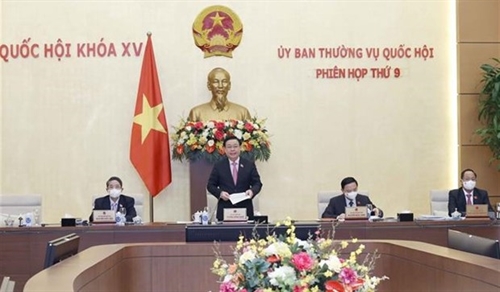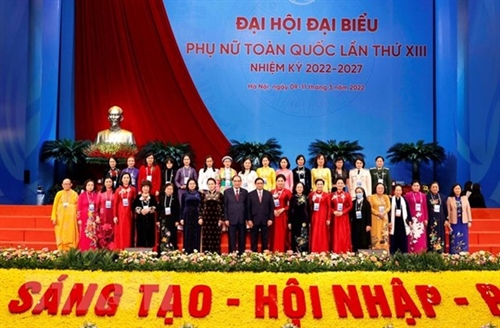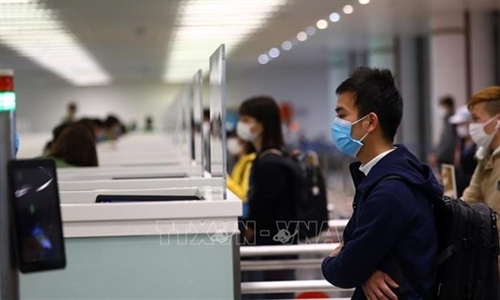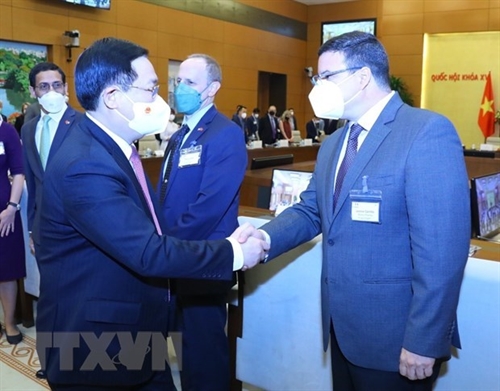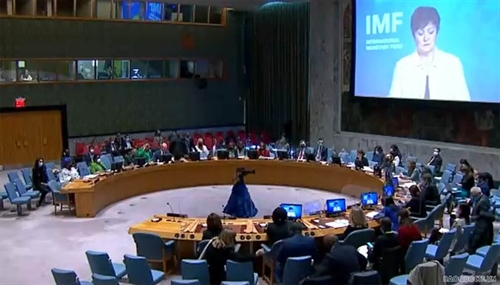The World Bank (WB) on March 11 released its brief updating Vietnam’s economic development in March, stating that the economy continues to show resilience and is recovering although downside risks have heightened.
Available data suggest continued recovery of domestic economic activities, with industrial production growing by 8.5 percent year on year and a broad-based improvement in manufacturing despite the surge of new COVID-19 cases to over 100,000 infections per day by the end of February.
After falling in January, production of computers, electronics, and optical products bounced back, posting a year-on-year growth of 9.1 percent. Apparel manufacturing maintained strong performance with a 24.7 percent growth against the same period last year, according to the report.
Retail sales grew by an estimated 3.1 percent in February. Sales of consumer services continued to recover, increasing by 5.9 percent, the first expansion since May 2021, as accommodation and catering services sales grew strongly. Sales of goods increased by 2.4 percent.
With imports growing much faster than exports, trade balance deteriorated from a surplus of USD 1.4 billion in January to a deficit of USD 2 billion in February.
Higher export growth rate could be attributed to phones, computers and electronics and machinery, whose exports grew by 6.2 percent in February.
Exports of garment-textile remained strong, growing by 25.8 percent. Strengthening imports partly reflect a jump in imports of phones, computers and electronics components from 14.9 percent in January to 32.3 percent in February.
Imports of petroleum products also increased by 146.8 percent, clearly reflecting rising oil prices. By trading partners, exports to the US remained robust, expanding by 14.6 percent while exports to China rebounded, growing by 19.5 percent after a 15.2 percent drop in January.
The WB brief also indicated that FDI commitment slowed while FDI disbursement continued to recover strongly.
Vietnam attracted USD 2.9 billion of FDI commitment in February, 15.9 percent lower than a year ago. Most of the commitments were made by existing firms intent on expanding their production facilities.
The disbursement of approved FDI projects increased by 7.9 percent in February, a third month of increase.
“CPI inflation remained subdued thanks to relatively stable food prices and still weak domestic demand. Credit demand remained strong after the Lunar New Year, keeping overnight interbank interest rate at 2.56 percent at the end of February, compared to less than 1 percent at the end of 2021,” the report continued.
Budget balance saw a USD 1.1 billion surplus in February as revenue performance remained strong. Expenditures increased thanks to improved disbursement of public investment.
Revenues grew by 5.3 percent in February while expenditures increased by 6.1 percent thanks to improvements in the execution of the public investment program.
Over the first two months, the Vietnamese Government collected 22.9 percent of total planned annual revenues. The Government also spent 12.8 percent of planned expenditures. Public investment disbursement improved significantly, reaching 8.6 percent of the target set by the Prime Minister, much higher than the rate 5.1 percent recorded in the same period last year.
The State Treasury issued USD 412 million worth of Government bonds denominated in local currency in February, raising total bond issuance to USD 1.4 billion, or 8.1 percent of annual plan in the first two months.
WB experts noted that Vietnamese authorities should encourage exporters to seek new markets and innovate into new products through global value chains and existing free trade agreements to strengthen export resilience. Keeping track of domestic price developments is also warranted.
Continued administration of the vaccine boosters and renewed health guidance are critical to manage the Omicron wave, the bank recommended.- (VNA/VLLF)
